- Anatomical terminology
- Skeletal system
- Joints
- Muscles
- Head muscles
- Neck muscles
- Muscles of upper limb
- Muscles of pectoral girdle
- Muscles of shoulder region
- Muscles of upper arm
- Muscles of forearm
- Muscles of hand
- Thoracic muscles
- Muscles of back
- Muscles of lower limb
- Heart
- Blood vessels
- Lymphatic system
- Nervous system
- Respiratory system
- Digestive system
- Urinary system
- Female reproductive system
- Male reproductive system
- Endocrine glands
- Eye
- Ear
Deltoid
The deltoid muscle (Latin: musculus deltoideus) is a thick triangular-shaped muscle of the upper limb. Its name derives from the Greek letter "delta," as the muscle resembles its shape. The deltoid muscle stretches between the clavicle, scapula, and humerus. As it provides movements at the shoulder joint, it is classified as the muscle of the shoulder girdle. The deltoid muscle is composed of three parts - clavicular, acromial and spinal. Each part has its own origin site. All parts merge together and have a common insertion site.
| Deltoid | |
| Origin | Clavicular part - acromial end of clavicle Acromial part - acromion of scapula Spinal part - spine of scapula |
| Insertion | Deltoid tuberosity of humerus |
| Action | Clavicular part - internal rotation of arm Acromial part - abduction of arm Spinal part - external rotation of arm Clavicular and spinal parts - adduction of arm Clavicular and acromial parts - flexion of arm Acromial and spinal parts - extension of arm |
| Innervation | Axillary nerve (C5, C6) |
| Blood supply | Deltoid and acromial branches of thoracoacromial artery, subscapular artery, anterior and posterior circumflex humeral arteries, deltoid branch of deep brachial artery |
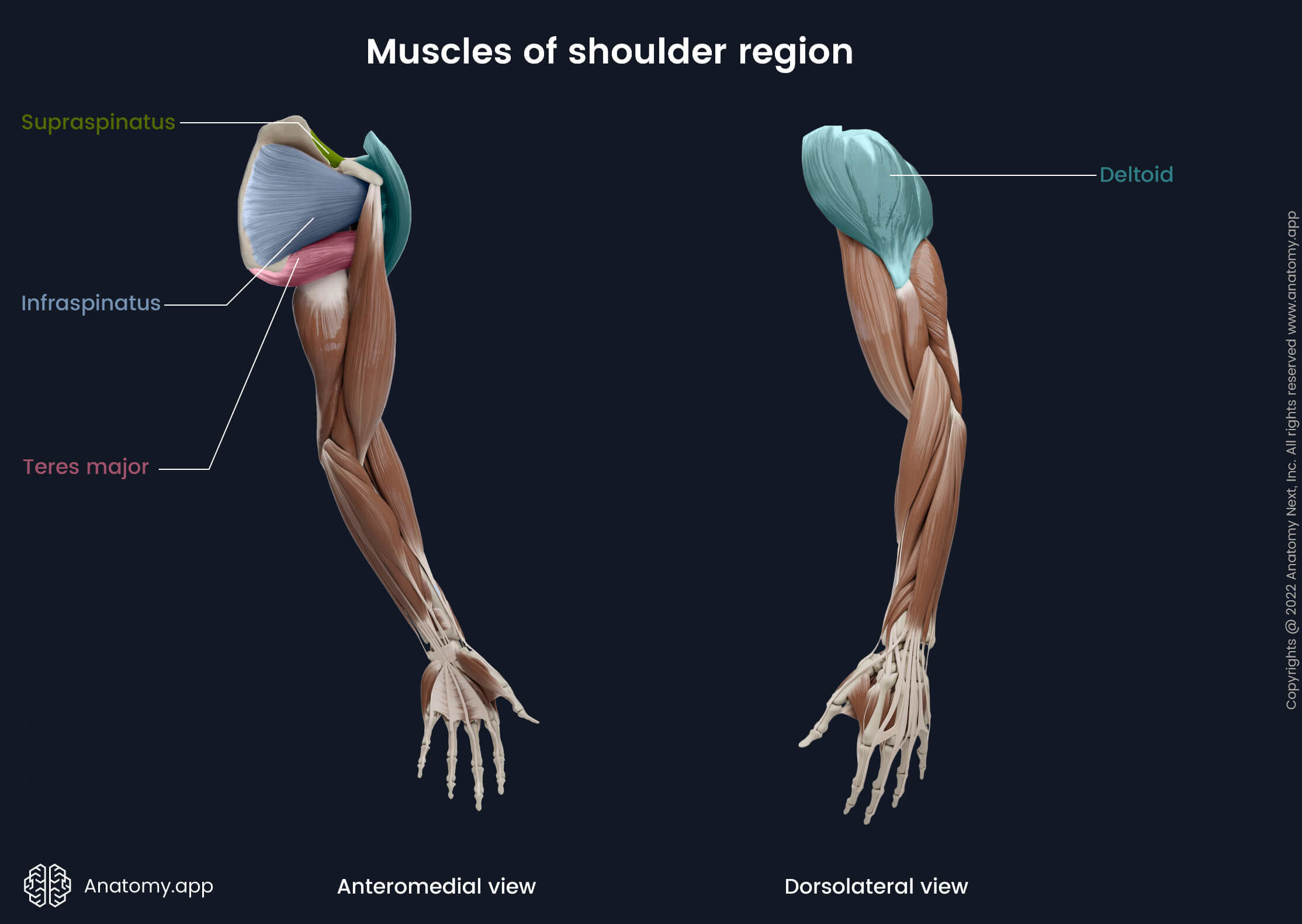

Origin
As written above, each part of the deltoid muscle has a different origin site. The clavicular part arises from the acromial end of the clavicle. The acromial part originates from the acromion of the scapula, while the spinal part arises from the spine of the scapula.
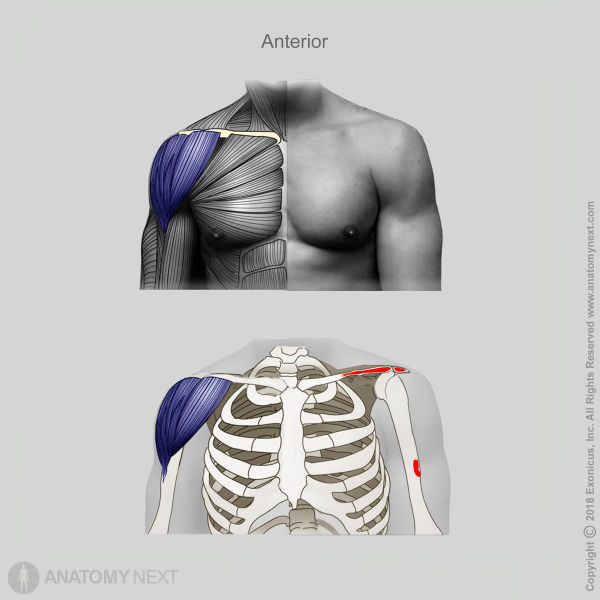
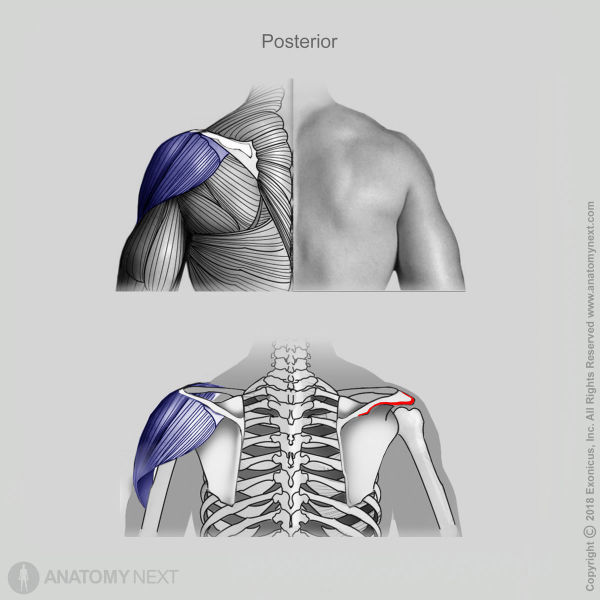
Insertion
Fibers from all three parts of the deltoid merge together and insert on the deltoid tuberosity of the humerus. It is located in the middle of the anterolateral surface of the humeral shaft.
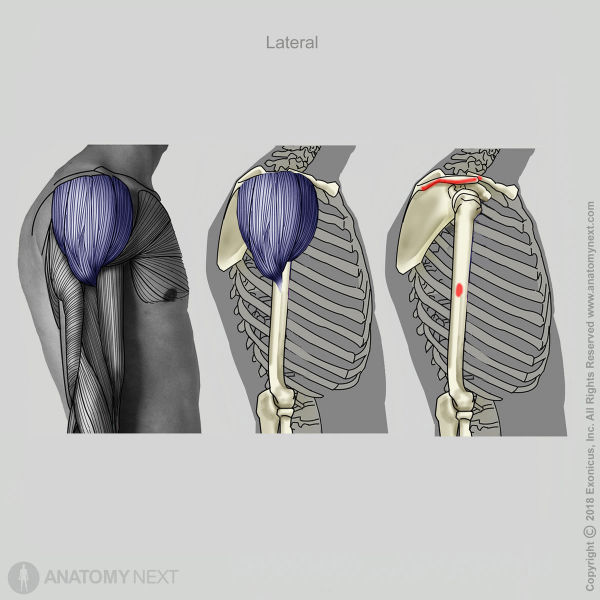
Action
Each activated part of the deltoid muscle provides different functions. The clavicular part is responsible for the internal (medial) rotation of the arm, while the spinal part provides the external (lateral) rotation of the arm. The fibers of the acromial part ensure the abduction of the arm.
Some functions are provided when several parts of the muscle are activated. The clavicular part together with the spinal part provides the adduction of the arm, while the clavicular and acromial parts together are responsible for the flexion of the arm. And finally, the acromial and spinal parts ensure the extension of the arm.
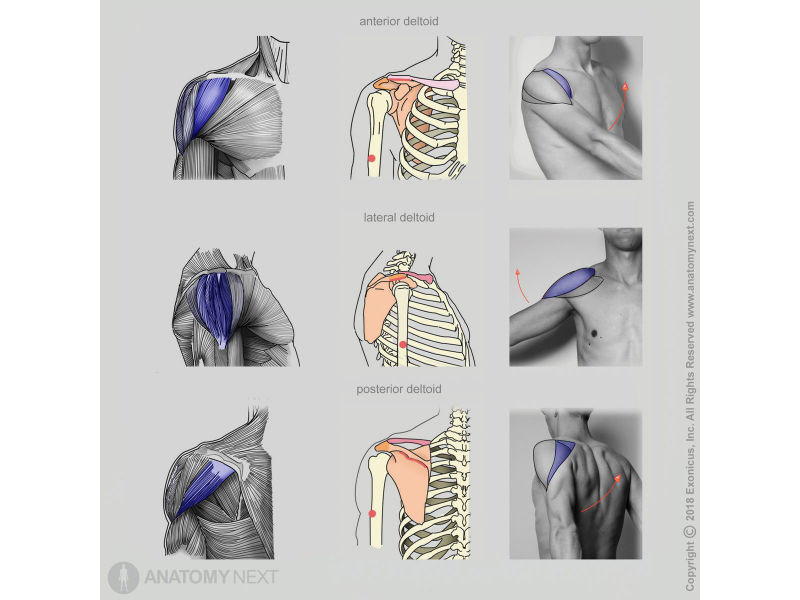
Innervation
The deltoid is innervated by the axillary nerve that arises from the fifth and sixth cervical (C5, C6) nerve roots of the brachial plexus.
Blood supply
The deltoid muscle receives arterial blood supply from the deltoid and acromial branches of the thoracoacromial artery, subscapular artery, anterior and posterior circumflex humeral arteries and deltoid branch of the deep brachial artery. All mentioned arteries arise from the axillary artery, except the deep brachial artery that is a branch of the brachial artery.